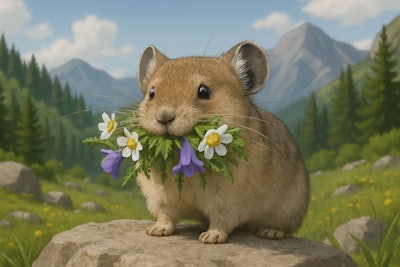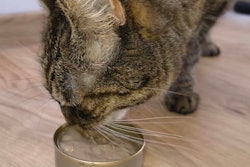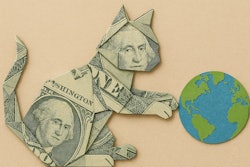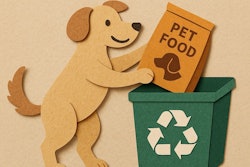
A charismatic animal influences people to care about ecological issues more than facts, charts and statistics. The pika (Ochotona sp.), an adorable alpine fuzzball, symbolized the effects of climate change for Allison Reser during her presentation at Petfood Forum Essentials 2025. Reser is the director of sustainability and innovation for the Pet Sustainability Coalition.
Reser could have recited the litany of warnings about rising seas, intense storms, heat waves and erratic weather, or recounted the current carbon dioxide content of the Earth’s atmosphere. But those numbers don’t make people coo like they do when they see a pic of a pika carrying a bouquet of flowers in its mouth. Pikas serve as a poignant poster-species for how climate change affects wildlife.
“Pika populations are declining, and the experts studying them have linked it to a couple of things,” Reser said. “So first is, we're getting less snow pack in Colorado and other places where the pika lives. They rely on the snow pack to insulate them during the winter, so that's really important. The other thing is increased temperatures. Some of those same adaptations that let the pika survive in the winter mean that… if they are exposed to temperatures above 80 degrees, they just die. And that makes me very sad, because temperatures are increasing.” created by Tim Wall using DALL-E 4
created by Tim Wall using DALL-E 4
Thinking of dead pikas would make anyone sad, especially animal lovers. Much sadder than if they think about ocean acidification or some other environmental catastrophe that doesn’t have pudgy, fuzzy little cheeks. Charismatic animals like pika can help put a face on an ecological issue.
Pet food brand protects jaguars
By giving pet owners a cute face to associate with climate change, brands can make their own sustainability initiatives more relevant. Pet owners tend to be animal lovers in general, so connecting a pet food company to wildlife conservation may resonate with pet owners. That animal doesn’t need to be as cute as a pika. The fierce cousins of house cats receive help from PremieRpet, a Brazilian dog and cat food company that produced the Natoo brand.
“They [Natoo] center their sustainability story around conservation,” Reser said. “From a sustainability perspective, jaguars are considered an umbrella species, and that means that by safeguarding the jaguar habitat, that means that you're protecting all the other species that share that ecosystem with them.”
When a jaguar population receives protection, many other species are protected due to the jaguar's role as an apex predator and a keystone species. Jaguars require large territories and diverse ecosystems to thrive, meaning their conservation ensures the preservation of vast landscapes, from tropical forests to wetlands. These habitats are home to countless other species, many of which are threatened or endangered. By safeguarding jaguar habitats, humans protect entire ecosystems, promoting biodiversity and ecological balance. This approach helps maintain healthy populations of prey species, preserves critical vegetation and supports intact communities of millions of species, from microbes to trees. Jaguar conservation benefits extend beyond the species itself.
Cats may be the pet of choice for many urban dwellers, but as human settlement expands, wild felines’ habitats are lost. Yet, jaguars briefly returned to Rio de Janeiro's streets, partly thanks to PremieRpet. Those jaguars were statues that prowled the streets of Rio and Paris as part of 2024’s Jaguar Parade. PremeiRpet was a gold sponsor of the parade.
The largest cat in the Western Hemisphere, jaguars once roamed from what is now the southwestern United States to northern Argentina. The International Union of Concerned Scientists classifies jaguars as “near threatened” on its Red List, because the big cats’ range has diminished dramatically.
To help those iconic keystone cats, three jaguar statues were displayed at iconic locations in Rio and Paris, then at the Olympic games in Paris. The statues were then auctioned to benefit non-profit jaguar conservation organizations, such as Onçafari, Panthera and the Ampara Animal Institute.
Jaguars serve as one example of wild creatures that may resonate with pet owners. Wild canids, such as African painted dogs or red wolves, could be conservation targets for dog food companies. Especially considering the popularity of ancestral diets, pet owners who aim to feed their pets like their wild ancestors may also want to help pets’ untamed cousins. People may project their love for pets onto similar wildlife. A playful tiger cub acts a lot like a rambunctious pet kitten, and a pack of African painted dogs cavorts like a group of dogs at a park. That similarity can lead to sympathy. That environmental empathy can help a pet food company to legitimize and define its sustainability goals.
“Pet food companies can do this by directly supporting NGOs that promote wildlife conservation efforts, both through monetary means and through volunteering,” a PremieRpet representative told Petfood Industry for an earlier article.
Whether adorable pikas or fierce jaguars, wildlife conservation can connect brands' sustainability initiatives with pet owners’ love of animals. created by Tim Wall using DALL-E 4
created by Tim Wall using DALL-E 4


















